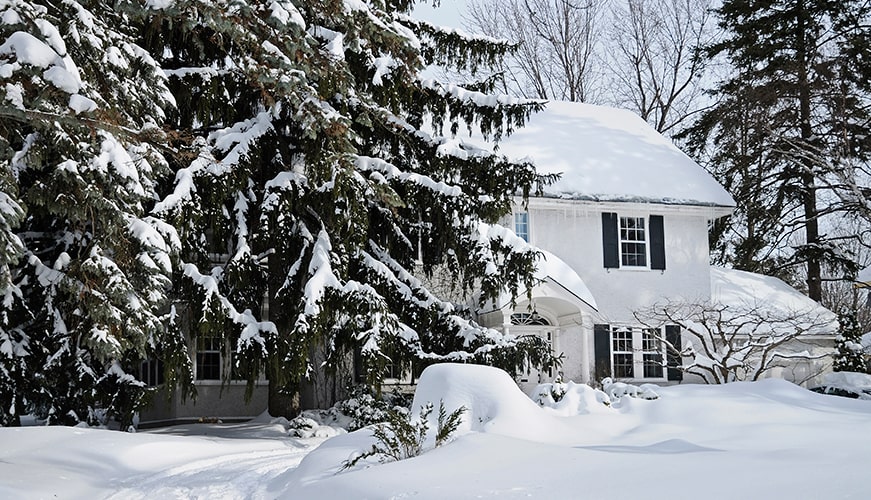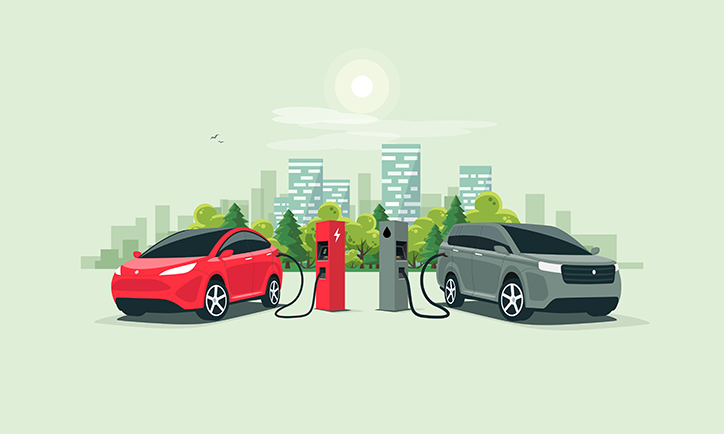Winter brings cozy nights and picturesque snowfall, but it also presents unique challenges that can put your home and safety at risk. Freezing temperatures, heavy snow, and ice accumulation can lead to accidents, property damage, and even increased energy costs. By taking proactive steps, you can protect your home and loved ones from winter’s harsh conditions. Here are eight essential ways to keep your home safe, energy-efficient, and secure this winter.
1. Trim Your Trees to Prevent Damage
One of the most overlooked winter hazards is the risk of falling tree branches. Heavy snow and ice accumulation can weigh down dead or weak limbs, causing them to snap and damage your roof, windows, or even power lines. To prevent costly repairs, inspect the trees around your home before winter sets in.
- Identify any large or dead branches hanging over your home or driveway.
- Hire a professional to remove risky limbs safely if necessary.
- Check for branches that could fall on a neighbor’s property to avoid liability issues.
By keeping your trees well-maintained, you not only protect your home but also contribute to a safer neighborhood.
2. Keep Your Walkways and Driveway Clear
Slippery sidewalks and icy driveways are leading causes of winter injuries. To prevent slips and falls, be diligent about snow removal and ice prevention.
- Spread a layer of salt or sand before snowfall to reduce ice buildup.
- Shovel snow as soon as possible after a storm to prevent compacted ice.
- Apply another layer of de-icer after shoveling to keep surfaces clear.
Additionally, practice safe shoveling techniques to avoid back strain or injury. If you experience frequent heavy snowfall, consider investing in a snow blower for added convenience.
3. Schedule an Annual Chimney and Heating System Inspection
If you have a wood-burning fireplace or use a chimney, it’s crucial to have it inspected and cleaned annually. Creosote, a highly flammable residue, can build up inside chimneys and increase the risk of fire.
- Hire a certified professional to check for blockages and remove creosote.
- Ensure proper ventilation to prevent carbon monoxide buildup.
- Test smoke detectors and carbon monoxide alarms regularly.
In addition to fireplaces, have your heating system inspected before winter arrives. A well-maintained furnace or boiler will improve efficiency, reduce energy costs, and prevent breakdowns during the coldest months.
4. Clean Your Gutters to Prevent Ice Dams
Clogged gutters are a major cause of winter water damage. When debris accumulates, melting snow cannot drain properly, leading to ice dams. These frozen obstructions can force water under your roof shingles, causing leaks and structural damage.
- Clear out leaves and debris from gutters before winter.
- Check for signs of ice buildup after heavy snowfall.
- Remove small icicles early to prevent larger formations that could fall and cause injuries.
Regular gutter maintenance ensures that water flows away from your home, reducing the risk of costly damage and leaks.
5. Monitor Indoor Air Quality and Ventilation
Winter means spending more time indoors, which can lead to poor air quality due to dust accumulation, dry air, and potential allergens. Ensuring good ventilation and air quality will keep your home comfortable and safe.
- Replace or clean air filters regularly to maintain efficient airflow.
- Use a humidifier to prevent excessively dry indoor air that can cause respiratory issues and static electricity.
- Ventilate high-moisture areas like kitchens and bathrooms to prevent mold growth.
By keeping track of your indoor air quality, you can maintain a healthier living environment throughout the winter months.
6. Insulate Pipes to Prevent Freezing and Bursting
Frozen pipes are a common winter issue that can lead to severe water damage. Insulating your pipes can prevent them from freezing and bursting when temperatures drop.
- Wrap exposed pipes with foam insulation or heat tape.
- Let faucets drip slightly during extremely cold nights to keep water flowing.
- Keep cabinet doors open to allow warm air to circulate around pipes.
Taking these precautions ensures your plumbing stays intact and prevents expensive water damage repairs.
7. Weatherproof Your Home for Energy Efficiency
Winter weatherproofing helps reduce heat loss and lowers your energy bills. Sealing leaks and insulating key areas can make your home more energy-efficient.
- Use weather stripping around doors and windows to prevent drafts.
- Add insulation to attics and basements to retain indoor warmth.
- Install thermal curtains to keep heat inside and block cold air from windows.
These simple upgrades can make a significant difference in your home’s warmth and energy efficiency.
8. Prepare an Emergency Kit for Winter Storms
Severe winter storms can cause power outages, making it essential to have a well-stocked emergency kit ready.
- Store flashlights, extra batteries, and a portable phone charger.
- Keep a supply of non-perishable food and bottled water.
- Have blankets, extra layers, and a backup heat source available.
Preparing in advance ensures you and your family stay safe and comfortable in case of unexpected winter emergencies.
Stay Safe and Cozy This Winter
With these eight essential steps, you can protect your home, prevent winter-related damage, and ensure a safe and comfortable season for your family. A little preparation goes a long way in keeping your property secure from harsh weather conditions. Stay warm, stay safe, and enjoy all that winter has to offer!



